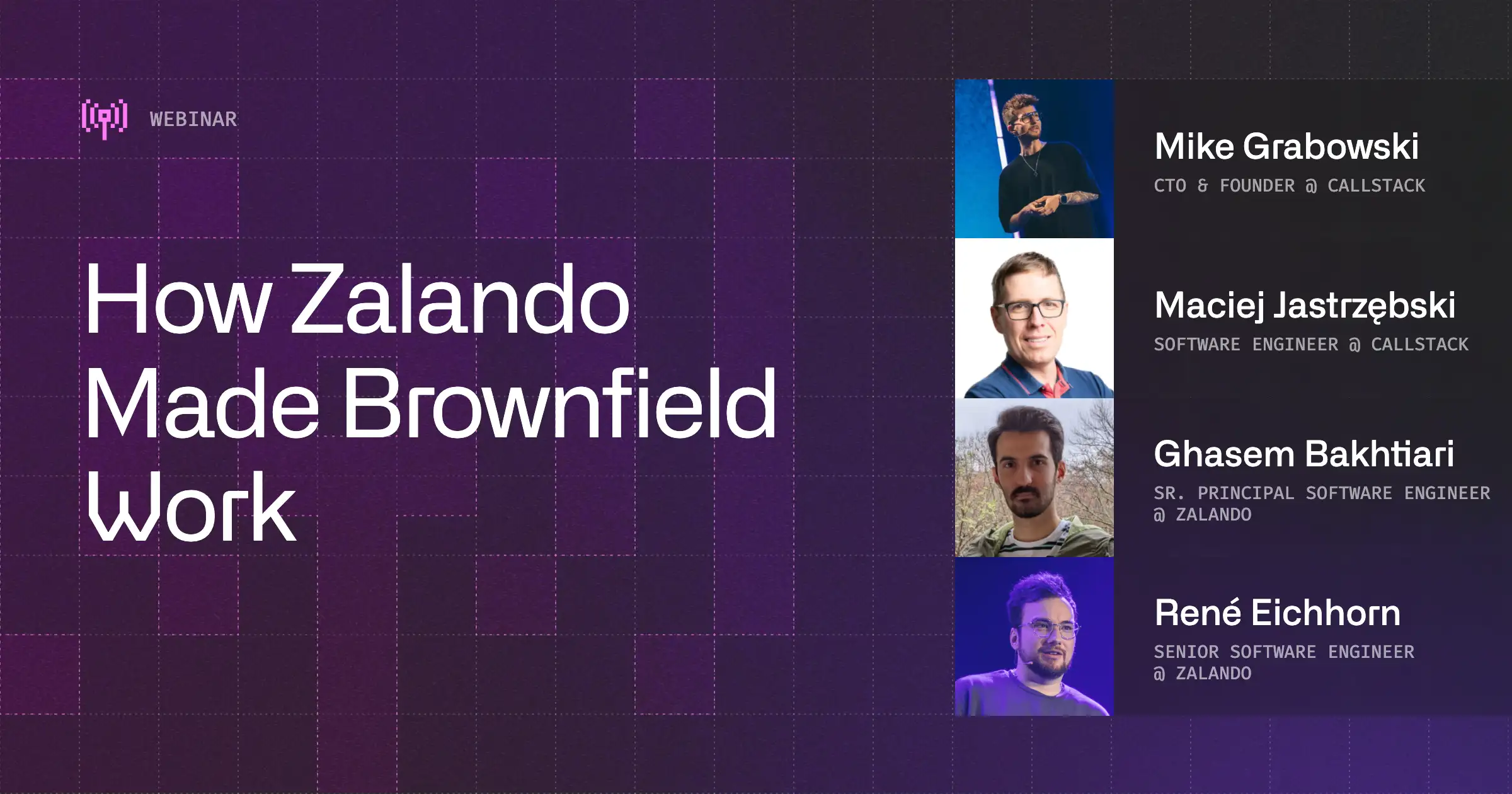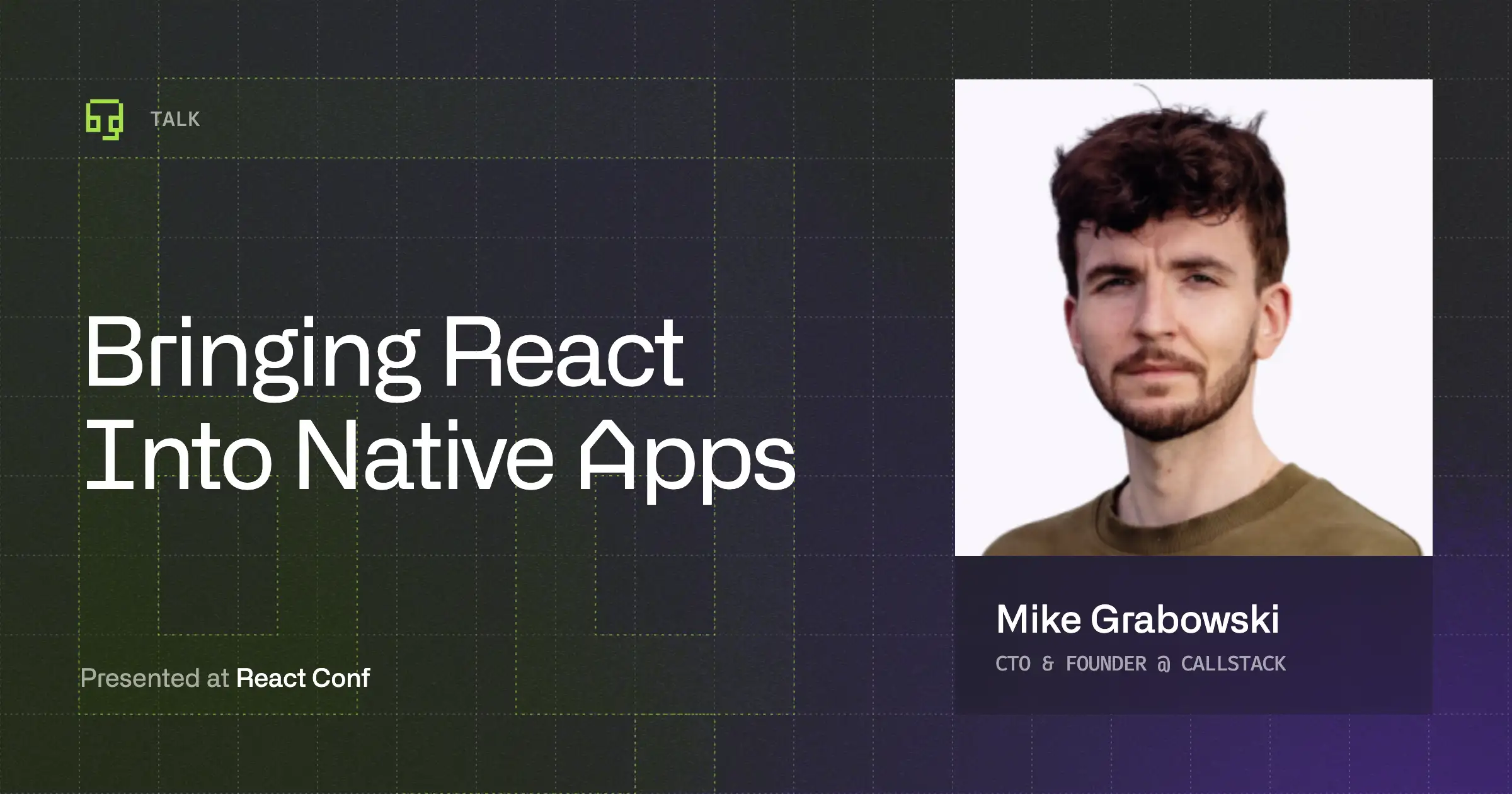Based on his own experience, Michał discusses the challenges that app developers are likely to face in brownfield projects. He also shares an actual example of a challenging project so you can hear first-hand what solutions worked best!
The second part focuses on Michał’s brainchild - React Native Brownfield library. Our guest describes its current status and plans for future developments. He also gives details as to what’s inside an Android and iOS package or how the library can facilitate the workflow of React Native developers and native teams.
Play the episode on your favorite platform. You can have little or no experience with React Native brownfield - our experts will explain it all.
Brownfield development with React Native
- Greenfield vs. brownfield projects
- Starting a brownfield project
- Gradual adoption when integrating new app components
- Business benefits of brownfield development with React Native
- Challenges faced by developers running brownfield projects
- React Native Brownfield library
In the first part, Mike and his guest explain what brownfield development means in practice: how it differs from greenfield development, what it’s like to work brownfield, and why brownfield development and React Native are a perfect match.
Learn more about
Brownfield
Here's everything we published recently on this topic.
We can help you move
it forward!
At Callstack, we work with companies big and small, pushing React Native everyday.
Code Sharing
Implement effective code-sharing strategies across all platforms to accelerate shipping and reduce code duplication.
Migration to React Native
Plan and execute a migration from native or hybrid stacks to React Native with minimal disruption and clear technical direction.
React Native Brownfield
Integrate React Native into existing native application and start sharing code across platforms immediately.
React Native Trainings
Equip your team with React Native skills through tailored training sessions.















